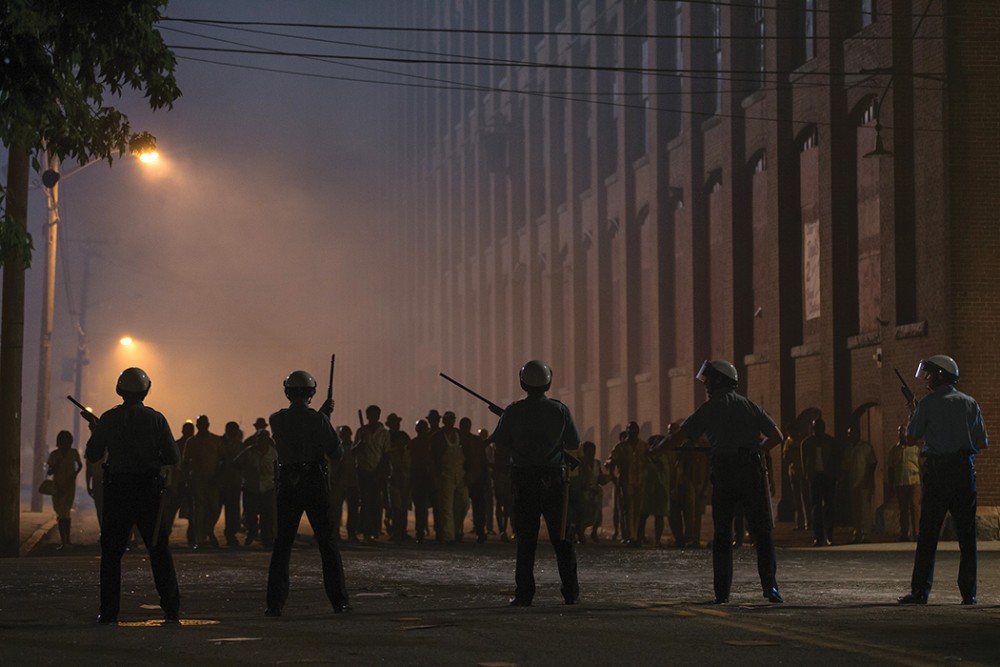The myth of white innocence in Detroit
Kathryn Bigelow's film lays bare our assumptions about guilt and race.

Kathryn Bigelow’s film Detroit opens with a police raid on a party for two black soldiers who have returned from Vietnam in 1967. “Welcome home,” a friend quips to one of the veterans as both are shoved into a police van with dozens of other black citizens. Once the riots have begun and the National Guard is called in, war is no longer something that happens overseas. Armored tanks and battalions of soldiers divide the city into military zones.
The action zeroes in on real-life events at the all-black Algiers Hotel. Police, state troopers, and National Guard swarm the building searching for a sniper. Things take a turn for the worse when police discover two white women in the room of one of the black soldiers. The raid turns into a vendetta.
Bigelow concentrates the chaos of violence in claustrophobic spaces. The camera moves from wide overhead shots of the riots to scenes inside the building, then into one cramped hallway. In that hallway, black victims and white interrogators are compressed into a few feet of space. Black suspects are pushed one at a time into the hotel rooms on either side for questioning. In those rooms, the violence expands in accordance with each officer’s need to demonstrate his power.




